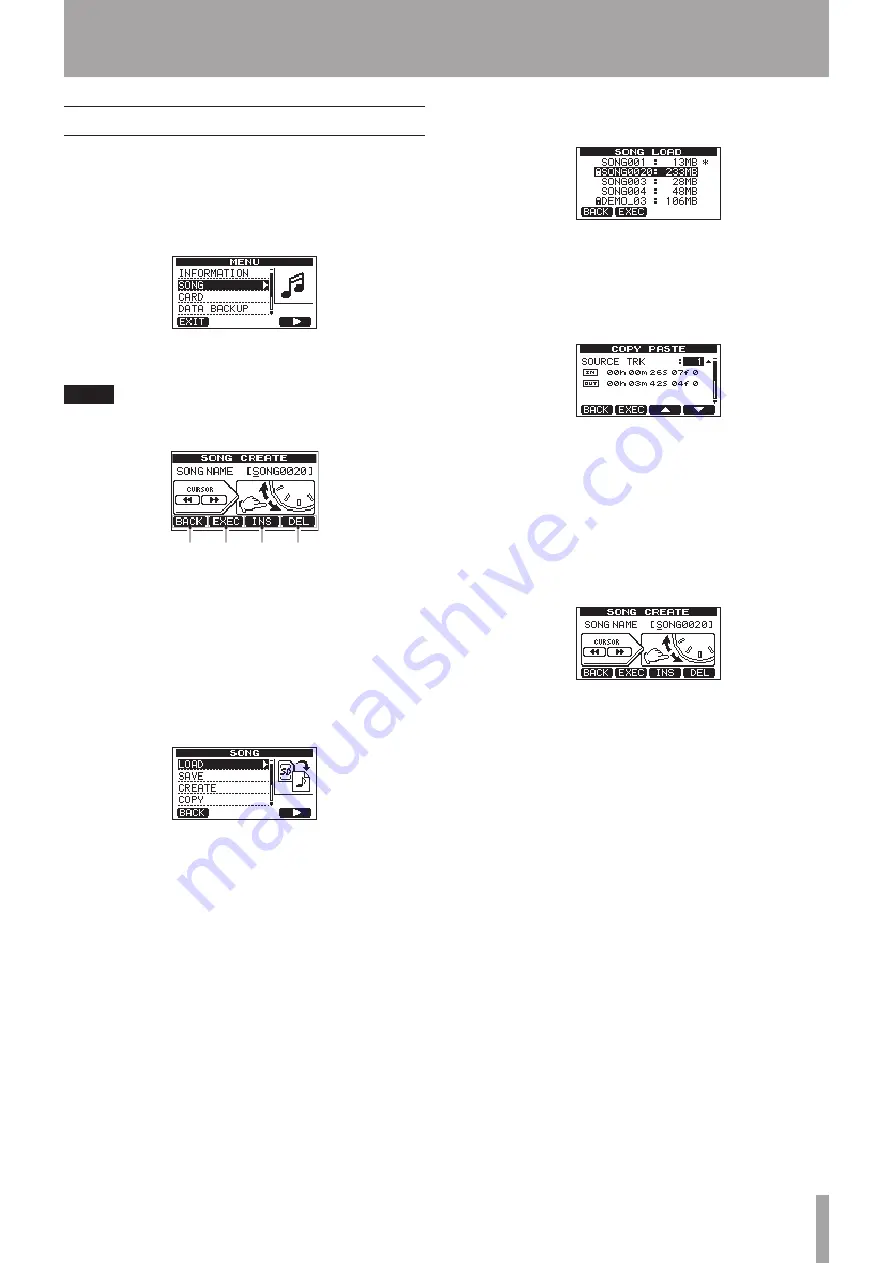
TASCAM DP-03SD
25
3 – Names and Functions of Parts
Screen operations
Use the MENU button and dedicated buttons to open screens.
Follow the guidelines below to use the functions on the screens.
These examples show basic operation procedures, but the actual
assignments of the function buttons vary depending on the
screen.
• Use the DATA wheel to select the desired item.
In this example from the
MENU
screen, “
SONG
” is selected by
the F4 (
¥
) button.
NOTE
The assignments of the function buttons are shown at the
bottom of the screen above the buttons themselves.
F1
F2
F3
F4
BACK
appears above the F1 button, so the assignment
of the F1 button is “
BACK
” when using this screen. In this
manual, we show this as the “F1 (
BACK
) button”. Likewise,
the assignments of the F2, F3 and F4 buttons are
EXEC
,
INS
and
DEL
, respectively.
• When an item has a sub-screen (the
MENU
screen, for
example) a “
¥
” appears to the right of the item. Use the F4
(
¥
) button to advance to that sub-screen.
• On a sub-screen, press the F1 (
BACK
) button to return to the
previous screen.
• To execute an item, press the function button with the
“
EXEC
” assignment.
In this example of the
SONG LOAD
screen, if you press the
F2 (
EXEC
) button the song that is selected by the cursor will
be loaded.
• When the cursor is on a setting value, use the DATA wheel to
change the value. Use the function buttons with
§
and
¶
assignments to move the cursor.
In this example of the
COPY PASTE
screen, you can use
the DATA wheel to change the value of the
SOURCE TRK
.
Use the F3 (
§
) and F4 (
¶
) buttons to move the cursor up
and down. Press the F2 (
EXEC
) button to copy and paste
the contents shown.
• When it is necessary to move left and right, use the REW
(
Ô
) (TO ZERO) and F FWD (
) (TO LAST REC) buttons.
At such times, an illustration appears on the screen showing
that the REW (
Ô
) and F FWD (
) buttons are assigned
to control the
CURSOR
.
• Press the HOME button to return to the Home Screen.
















































